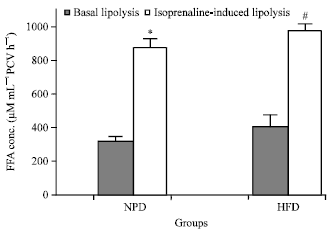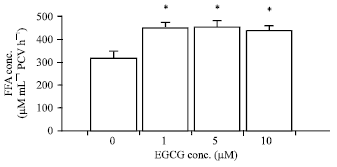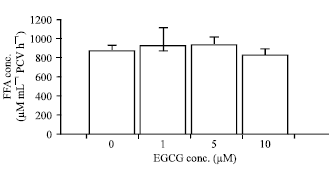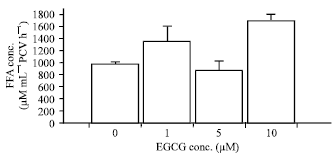Research Article
Different Lipolytic Response to (-)-Epigallocatechin-3-gallate in Adipocytes Derived from Normal Diet-fed Rats and High Fat Diet-fed Rats
Pharmaceutical Chemistry and Natural Product Research Unit, Faculty of Pharmacy, Mahasarakham University, Mahasarakham, 44150, Thailand
Atika Jaruchotikamol
Pharmaceutical Chemistry and Natural Product Research Unit, Faculty of Pharmacy, Mahasarakham University, Mahasarakham, 44150, Thailand
Jirawan Chaiyachart
Pharmaceutical Chemistry and Natural Product Research Unit, Faculty of Pharmacy, Mahasarakham University, Mahasarakham, 44150, Thailand
Pannee Sonrasee
Pharmaceutical Chemistry and Natural Product Research Unit, Faculty of Pharmacy, Mahasarakham University, Mahasarakham, 44150, Thailand
Wannaporn Poungpan
Pharmaceutical Chemistry and Natural Product Research Unit, Faculty of Pharmacy, Mahasarakham University, Mahasarakham, 44150, Thailand














